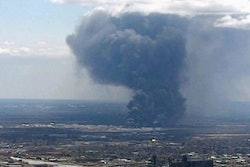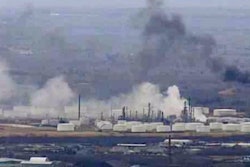Occupational safety doesn’t exactly have a reputation as a fast-paced industry. The National Safety Council’s annual list of top-ten safety violations has looked almost identical every year for the last decade, and safety managers continue to cite the same job frustrations in a succession of annual surveys.
But under the surface there is change happening in the world of health and safety. Here are four trends that may not seem monumental — but they have the potential to affect the way many safety managers do their job.
More Focus On The “Human” Element
For years, the safety conversation was largely dedicated to compliance and behavior. Recently, the term “behavior” has started to fade and the talk in safety publications and at conferences is increasingly about human error, human decision-making, human operations and performance, and various human factors that influence people’s actions in the workplace.
Proponents say that this is a more accurate and effective way to look at how humans interact with systems in the workplace. Detractors argue that it simply puts lipstick on the same old BBS. Whichever side of the fence you fall on, be prepared to start hearing a lot more about “human”.
Digital Everything
in the last decade the number of safety vendors selling digital products has exploded. Most of them provide recordkeeping, document storage and data management services. But the range of products continues to grow, from expansive compliance management solutions to modest toolbox talk subscription services and other online offerings. Over the coming years, more and more safety systems will be purchased from or managed online, giving safety professionals digital access to more information and capabilities than ever.
Better Data
Following closely behind the digital trend is a transformation in the collection and use of safety data. Organizations are becoming better and better at tying safety data into larger organizational performance and at parsing safety results into useful segments. More businesses will also begin tracking increasingly nuanced information—gone are the days when the majority of companies counted injuries and called it a day.
Basic safety data — injuries, near-misses and other events — is also being tracked with more accuracy and efficacy. In part, this is because information collection systems are becoming more effective. It’s also a result of safety professionals getting better at encouraging workers to submit reports.
Employee Demographics
The North American workplace is undergoing a massive shift in demographics. There is a larger number of older workers than ever — and there’s also a huge wave of younger employees entering the workforce.
The new workers flooding the labor pool have drastically different life experiences, job expectations and learning styles than previous generations. Meanwhile, as Baby Boomers age they become more susceptible to sprains and strains, vision and agility issues may put some older workers at greater risk of injury, and there’s a higher degree of complacency among many workers that is brought on by doing their job the same way for years.
These demographic changes present several challenges for safety and operational managers as they figure out how to connect with two very different generations. There is a real need to educate and mentor younger workers while keeping older ones healthy and motivated. This likely means developing multiple safety playbooks and taking a flexible, adaptive approach to training, compliance and supervision.
Matthew Howard is the Director of Product Development for Pro Toolbox Talks.






















